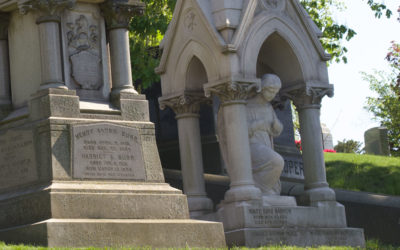Villanelle Variations
Quick Links
1. Learning by Going
“I learn by going where I have to go,”
writes Theodore Roethke in “The Waking.”
“The art of losing isn’t hard to master,”avers Liz Bishop’s speaker in “One Art.”
These lessons in living we aim to master
as we try to learn where we need to go—and whether we can measure up to
the wisdom reflected in these words.
(If, indeed, losing is an art to master.)How can we know what we need to do
and if we can master what needs mastering?
We learn by going where we need to go.“Don’t let anybody mess with your swing,”
Wen Cope writes in her “Ted Williams Villanelle.”
The key to the art of hitting—from a master.We won’t let anybody mess with our swing.
We learn by doing what we have to do.
We learn by going where we have to go—
and hope losing is an art we can master.
2. Learning by Doing
We learn by doing what we have to do.
This much we know with solid certainty—
And that the art of losing isn’t hard to master.We mustn’t let anybody mess with our swing,
but do our work our way—that’s the thing.
We learn by doing what we have to do.Just make a plan and do our thing—and keep
on trying, however hard to learn
the art of losing. Become a master.Roethke wakes us to the blessings nature brings.
Bishop grasps the losing art as master.
Cope knows we learn by doing what we do.The trick is to know where to look, how to find
teachers and mentors skilled in the knowledge
that losing need not be a disaster.We learn by going where we have to go,
and not let anyone mess with our swing.
We learn by doing what we have to do and
hope that losing is an art we can master.
3. The Art of Reading
The art of reading isn’t hard to master,
some say. But I say au contraire; not so.
It is no small accomplishment to read well,with intense absorption in the text.
It requires attention and discernment.
The art of reading takes effort to master.It requires reading many kinds of books
some easy, some more challenging.
To read good books and read them truly well—with skill and confidence, with ease and grace—
deepens understanding, makes one wise.
To learn the art of reading—to become a master—read widely and deeply with pen in hand
to mark and talk back to the texts you read.
It’s no small gain to read supremely well.It’s a skill for lifelong learning pleasure.
Read for fun as well as learning—for delight.
The art of reading leads to mastery
of the page in pixels or in print. Read well.
4. The Art of Writing
The art of writing is no doubt hard to master.
And so, much writing is a disaster.
To write well takes time and thought and care.That’s why good writing remains so rare.
Too often writing is turgid, slipshod, bland.
The art of writing is not easy to master.Let the reader do the work, some writers say.
So what if the writing is tough to disentangle.
Writing well takes time and thought and care.Don’t make the reader struggle through your words
to grasp the aim and essence of your thought.
The art of writing is not a simple matter.A tangled text does not a complex thinker make.
Easy writing makes for damned hard reading.
Writing well takes time and thought and care.Well-wrought writing helps readers seize and hold
your thought. Readers should find your meaning clear.
The art of writing is hard to master.
Writing well takes time and thought and care.
5. Artful Choices
Writing is an art of making choices,
many careful choices large and small.
Writing succeeds best with artful voices.Which word here, which there? Which phrase?
What punctuation to speed up or slow down?
Writing is an art of making choices.How to organize? Where to paragraph?
Where to put this fact, that detail, and how?
Writing works best with authentic voices.What point to make? What tone to take?
Where to digress, if at all, and why?
Writing is an art of making choices.What topic to survey, what to say?
Why it’s important, why it matters and to whom?
Writing makes its mark with vibrant voices.Concept and form, image, evidence, idea—
Good writing blends these and more with style and grace.
Writing is the art of making choices.
Write well, write strong with engaging voices.
6. Revision: A Necessary Art
The art of revising is hard to master.
Revision is crucial—the heart of the matter.
Writing, unrevised, results in disaster.Verb tenses don’t match, wind up misaligned.
Nouns mate with pronouns in single plurality.
The art of revising is hard to master.Paragraphs lose their centers, lack unity.
Coherence, too, is gravely traumatized.
Unrevised writing leads to such disasters.Sentences mangled, their sense obscured,
syntactic connections lost through disregard.
The art of revising is hard to master.Words and phrases remain rife with cliché.
Concepts persist opaque in foggy pensée.
The art of revising is hard to master.Chaos reigns supreme—the center does not hold.
Writers lose readers, comprehension imperiled.
The art of revising is surely hard to master.
Writing unrevised?—Courting disaster!
7. Blessed Revision
There is no good writing without revision—
the path to writing worth reading.
Revision is the crux of writing well.How to revise? First through excision
to strengthen writing by concision.
There is no real writing without revision.What to cut is the question: where to wield
the scalpel? The answers are few but clear.
Revision is the crux of writing well.Eliminate needless prepositions;
“prepositionitis” equals wordiness.
There is no strong writing without revision.Reverse passive-voice constructions. They lack verve.
Convert them to active voice sentences.
Revise relentlessly, with active verbs the cruxof writing well. Cut intensifiers:
“very,” “really,” “actually,” “in fact.”
Writing worth reading requires revision—
blessed revision—the crux of writing well.
blessed revision—the crux of writing well.
8. The Art of Teaching
Teaching is a craft, an art, a blessed skill,
a call to the mysteries of learning.
The art of teaching takes a long time to master.We teach in part to give, in part to learn.
In teaching others we also teach ourselves.
Teaching is a craft, an art, a blessed skill.We teach a subject, its discipline of mind.
We practice teaching’s craft each day and learn
the art of teaching takes a lifetime to master.Others taught us, inspired us to pursue
our passion, develop our expertise.
Teaching is a craft, an art, a blessed skill.As novices we start, then grow into
journeying apprentices who understand
the art of teaching takes a long time to master.We teach students, not subjects only, and
tailor our practice to their distinctive needs.
Teaching is a craft, an art, a blessed skill.
The art of teaching takes a lifetime to master.


Robert DiYanni
Author ⪢ | Professor ⪢ | Consultant ⪢
Robert DiYanni is a professor of humanities at New York University, having served as an instructional consultant at the NYU Center for the Advancement of Teaching and Center for Faculty Advancement. For these centers he conducted workshops and seminars on all aspects of pedagogy, consulted with faculty about teaching concerns, visited and observed classes, and provided a wide range of pedagogical consultative services. Professor DiYanni serves on the faculties of the School of Professional Studies and the Stern School of Business at NYU. He earned his undergraduate degree in English from Rutgers University, attended a Master of Arts in Teaching program at Johns Hopkins University, and received a Ph.D. in English Language and Literature from the City University of New York Graduate Center.
In addition to his work at NYU, Dr. DiYanni has taught at City University of New York, at Pace University, and as a Visiting Professor at Tsing Hua University in Taiwan and at Harvard University. As a high school teacher for four years and a college professor for more than four decades, Professor DiYanni has taught students from eighth grade through doctoral candidates. Most of his teaching, however, has been with college and university undergraduates. His numerous workshops, offered in more than twenty countries, have been attended by secondary school teachers and administrators, as well as by undergraduate college and university faculty and administrators.
Dr. DiYanni has written and edited numerous textbooks, among them, Literature: An Introduction; The Scribner Handbook for Writers (with Pat C. Hoy II); Arts and Culture: An Introduction to the Humanities, (with Janetta Rebold Benton), the basis for a series of lectures given at the Metropolitan Museum of Art; and Modern American Poets: Their Voices and Visions, which served as a companion text for the PBS television series Voices and Vision, which aired in the late 1980s.
You may also want to read these…
Comparing Poems
Comparison is one of the best ways of teaching anything; it is especially useful for reading and teaching…
The Widow of Ephesus
Once there was a certain married woman in the city of Ephesus, whose faithfulness to her husband…
Villanelle Variations
“I learn by going where I have to go,” writes Theodore Roethke in “The Waking.” “The art of losing…


